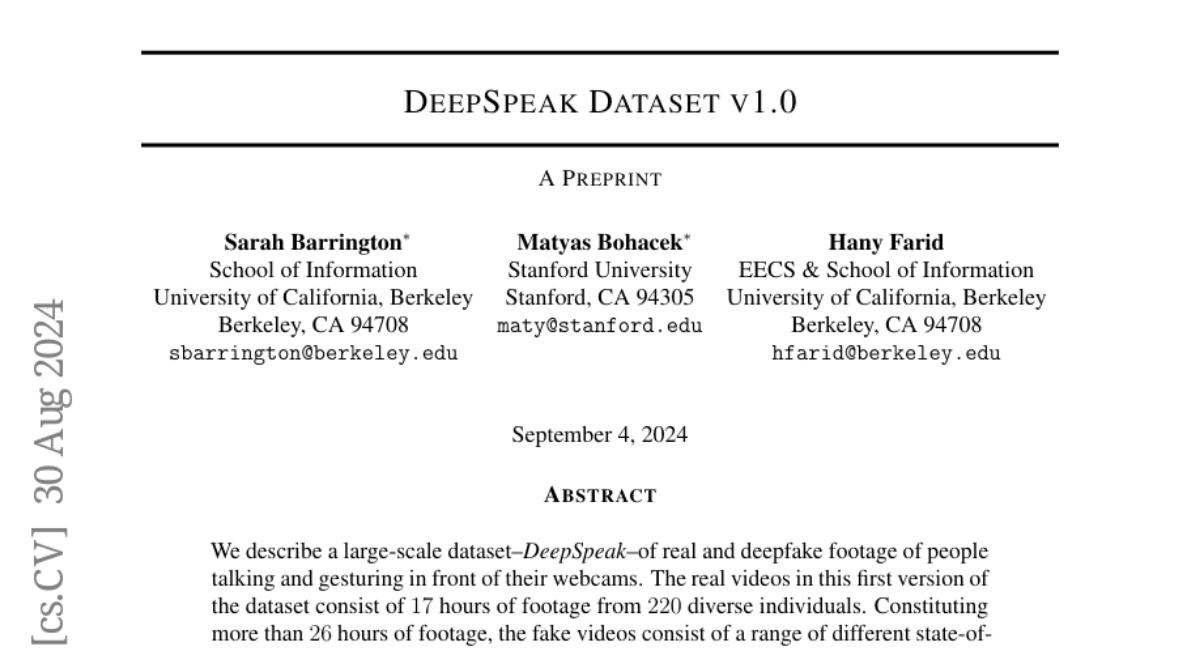DeepSpeak Dataset v1.0
Sarah Barrington, Matyas Bohacek, Hany Farid
2024-08-15

Summary
This paper describes the DeepSpeak dataset, which includes real and deepfake videos of people talking and gesturing, aimed at helping researchers study how to differentiate between genuine and manipulated footage.
What's the problem?
With the rise of deepfake technology, it has become increasingly difficult to tell real videos from fake ones. This poses challenges for various fields, including security and media, where understanding the authenticity of video content is crucial. However, there hasn't been a comprehensive dataset to support research in this area.
What's the solution?
The authors created the DeepSpeak dataset, which contains over 34 hours of video footage—9 hours from real individuals and more than 25 hours of deepfake videos using advanced face-swapping and lip-syncing techniques. This dataset provides researchers with a diverse collection of videos to analyze and develop methods for detecting deepfakes more effectively.
Why it matters?
This research is important because it provides a valuable resource for studying deepfakes, which can have serious implications for misinformation and trust in media. By making this dataset publicly available, it encourages further research and development of tools that can help identify fake videos, ultimately contributing to a more informed society.
Abstract
We describe a large-scale dataset--{\em DeepSpeak}--of real and deepfake footage of people talking and gesturing in front of their webcams. The real videos in this first version of the dataset consist of 9 hours of footage from 220 diverse individuals. Constituting more than 25 hours of footage, the fake videos consist of a range of different state-of-the-art face-swap and lip-sync deepfakes with natural and AI-generated voices. We expect to release future versions of this dataset with different and updated deepfake technologies. This dataset is made freely available for research and non-commercial uses; requests for commercial use will be considered.